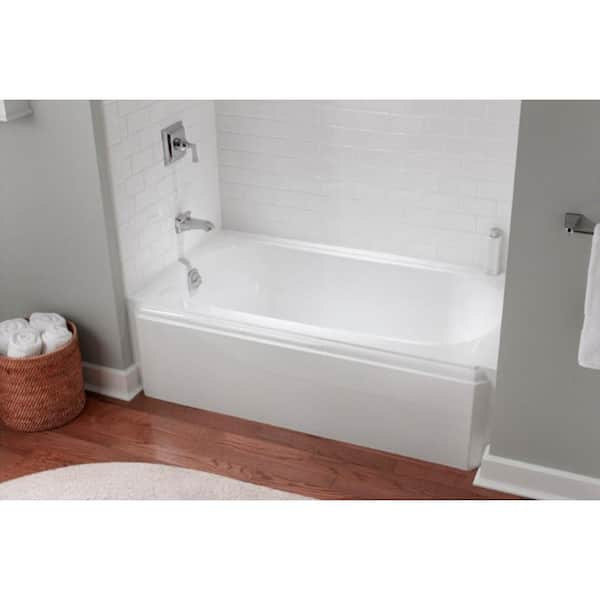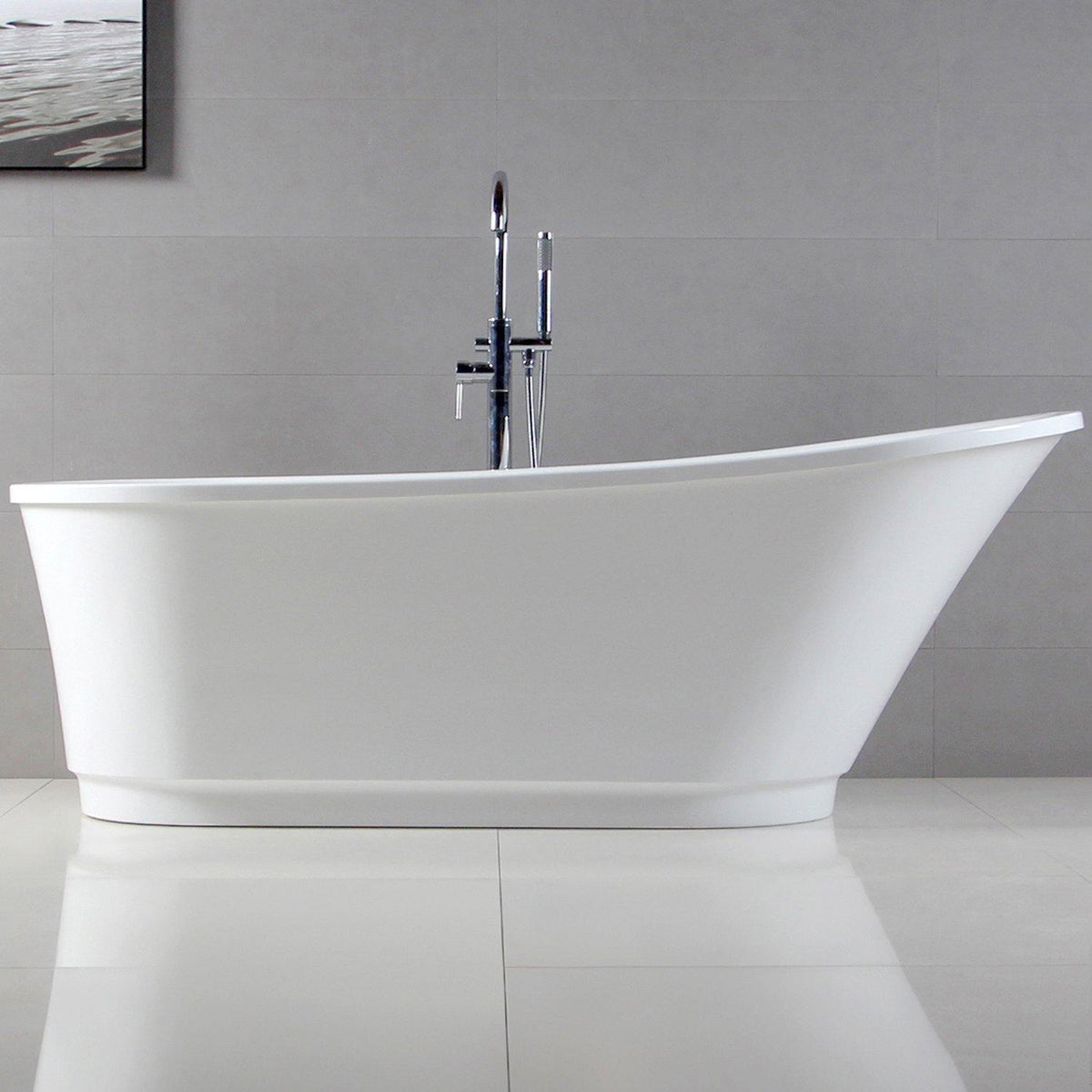Exactly How To Install A Bath Tub (For Novices).
Exactly How To Install A Bath Tub (For Novices).
Blog Article
We have uncovered this great article about Tools You Need to Install a New Bathtub below on the internet and believe it made sense to discuss it with you on this site.

Installing a bathtub isn't exactly rocket science, yet it does call for strong plumbing, woodworking, and in some cases, tiling skills. Replacing an old bathtub with a brand-new one is likewise a moderately difficult task. If the old bathtub is easily accessible, the task can move speedily; if you need to open up a wall to get rid of the old bathtub as well as position the new bath tub, the job is much harder. In either instance, the job is within a home handyman's abilities, although you will certainly need an assistant to leave the old tub and also set in the new one. Make certain you have certified on your own for the job and also are comfortable trying it. Instead of hiring a service provider to take control of a halfway-completed project, it is far better to consider using one before you start. Possibilities are you might need a specialist plumber to make tube connections.
This article will certainly help you set up a new tub in your bathroom if you have actually already gotten a new bathtub and do not require to alter the setup of your previous supply of water pipelines.
Your tools and also material list should make up the following:
Removing Old Taps
If you require to replace old taps with brand-new ones as a part of your installation, after that the first thing you need to do is disconnect the water system. After doing so, activate the taps to drain any type of water continuing to be in the system. The procedure of removing the existing taps can be rather problematic because of the limited accessibility that is usually the case.
Use a basin wrench (crowsfoot spanner) or a faucet device to reverse the nut that attaches the supply pipelines to the taps. Have a cloth ready for the staying water that will originate from the pipelines. As soon as the supply pipelines have been eliminated, use the exact same device to loosen up the nut that holds the faucets onto the bath/basin. You will need to stop the solitary faucets from transforming during this process. When the faucets have actually been gotten rid of, the holes in the bath/basin will have to be cleaned up of any type of old securing substance.
Prior to moving on to fit the new taps, compare the pipeline links on the old faucets to the brand-new faucets. If the old faucets are longer than the new taps, then a shank adapter is required for the new taps to fit.
Fitting New Touches
If the tails of the new taps are plastic, then you will need a plastic port to avoid damages to the string. One end of the port fits on the plastic tail of the faucet and also the various other end gives a link to the existent supply pipes.
If you need to fit a monobloc, then you will require reducing couplers, which attaches the 10mm pipeline of the monobloc to the typical 15mm supply pipeline.
Next off, place the faucet in the mounting hole in the bath/basin guaranteeing that the washing machines remain in area in between the faucet and also the sink. Secure the tap in place with the producer offered backnut. When the faucet is securely in place, the supply pipes can be linked to the tails of the taps. The taps can either be connected by utilizing corrugated copper piping or with regular faucet ports. The former type should be connected to the tap ends first, tightening just by hand. The supply pipelines can later be connected to the other end. Tighten up both ends with a spanner after both ends have actually been linked.
Setting up the Bathtub
Using both wood boards under its feet, put the bathtub in the required placement. The wood boards are valuable in evenly spreading the weight of the bath tub over the location of the boards instead of focusing all the weight onto 4 little points.
The next objective is to make sure that the bathtub is leveled all round. This can be attained by inspecting the spirit level and also readjusting the feet on the tub until the level checks out level.
To mount taps, fit the bottom of the outermost versatile faucet port to the suitable supply pipeline by making a compression sign up with; then do the very same for the other tap.
Activate the supply of water and inspect all joints and brand-new pipework for leaks as well as tighten them if required. Load the tub as well as likewise check the overflow electrical outlet and the regular outlet for leakages.
Lastly, fix the bath paneling as described in the maker's instruction manual. Tiling as well as sealing around the bathtub needs to wait till the bathtub has actually been made use of a minimum of once as this will certainly settle it into its last position.
Getting ready for the Installment
Firstly, the supporting structure provided with the bath must be fitted (if called for) according to the manufacturer's directions. Next off, fit the faucets or mixer to the bathtub. When fitting the tap block, it is very important to make sure that if the tap includes a plastic washing machine, it is fitted in between the bath as well as the faucets. On a plastic bathroom, it is additionally sensible to fit a supporting plate under the faucets device to stop strain on the bathtub.
Fit the versatile faucet adapters to the bottom of both taps making use of 2 nuts and also olives (sometimes supplied with the tub). Fit the plug-hole outlet by smearing mastic filler round the sink electrical outlet opening, and afterwards pass the electrical outlet through the hole in the bath. Use the nut supplied by the maker to fit the plug-hole. Take a look at the plug-hole electrical outlet for an inlet on the side for the overflow pipeline.
Next off, fit completion of the adaptable overflow pipe to the overflow outlet. After that, screw the pipe to the overflow face which should be fitted inside the bathroom. See to it you use all of the supplied washers.
Connect the trap to the bottom of the waste outlet on the bathtub by winding the thread of the waste outlet with silicone mastic or PTFE tape, and screw on the trap to the electrical outlet. Attach all-time low of the overflow tube in a comparable manner.The bathroom need to currently prepare to be fitted in its final position.
Tiling Around the Bathtub
In the area where the bathroom fulfills the floor tile, it is essential to seal the joins with a silicone rubber caulking. This is important as the installation can relocate sufficient to split a stiff seal, triggering the water to permeate the wall between the bath and also the tiling, leading to complications with dampness and also feasible leakages to the ceiling below.
You can choose from a variety of coloured sealers to assimilate your components as well as fittings. They are sold in tubes and also cartridges, and also can sealing gaps approximately a size of 3mm (1/8 inch). If you have a larger gap to load, you can load it with twists of soaked paper or soft rope. Bear in mind to always fill the bath tub with water prior to sealing, to allow for the motion experienced when the tub is in usage. The sealer can split relatively early if you do not take into account this movement prior to securing.
Additionally, ceramic coving or quadrant tiles can be used to border the bathroom or shower tray. Plastic strips of coving, which are easy to use as well as cut to dimension, are additionally quickly offered on the market. It is suggested to fit the floor tiles utilizing water-resistant or waterproof sticky and cement.
Bathtub Installation
How Important Is A Bathtub To Your Home?
High-quality baths, showers, and other bathroom updates are necessary when considering a smart investment in your home. It’s a room that you go to every day and one that is constantly being used by guests.The bathroom is one of the top trafficked rooms in a home and also one of the most valuable in terms of home resale.
Install Piping Before Tub
You will be using your existing drain and waste vent system, but pipes required include the hot and cold water supply lines and a pipe leading to a shower head. A mixing valve and shower head are also needed. Air chambers may be required.
Position the Tub
Lower the tub into place so that the continuous flange fits against the wall studs and rests on 1’x4' or 2’x4' supports. Anchor the tub to the enclosure with nails or screws inserted through the flanges into the studs.
NOTE: Remember, bathtubs and shower stalls may require support framing. A bathtub filled with water is extremely heavy, so check building codes and framing support before installing the tub.
Assemble Drain Connections
Assemble the bathtub drain connections by connecting the tub overflow with the tub drain above the trap, not beyond it. The trap will have a compression fitting that screws over the arm of the overflow assembly.
Place a Pipe For the Shower Head
First, locate a brass female threaded winged fitting and attach it to a framing support via a screw or a nail. Then run a pipe up the wall for the shower head. Sweat or solder the other side of the brass fitting to the top of the pipe.
Attaching Hot and Cold Water Lines
Attach your water lines for both hot and cold by sweating these directly into the hot and cold ports of the mixing valve. The mixing valve will be how water enters the tub’s system, not by the pipes themselves.
Install the Spout
Extend a piece of 1/2 inch pipe, or whichever length is specified in the manufacturer’s instructions, for the tub spout. Sweat on a male threaded fitting at the end of the pipe or use a brass nipple of the proper length and a 1/2 inch cap.
NOTE: At this point you should have your rough-in plumbing work inspected before proceeding further.
Check For Leaks
Restore the water pressure and check the drain connection and the supply pipes for any sign of leaking.
estore the Bathroom Wall
Replace the wall with moisture-resistant drywall as a base for your wall covering. Seal the joints between the wall and your new tub with silicone caulk as protection against water seepage.
https://www.berkeys.com/2016/12/02/bathtub-installation-dallas/

I am very intrigued by How to Install a Bathtub and I am praying you liked my post. Do you know someone else who is in to the niche? Feel free to promote it. I truly appreciate reading our article about How to Install a Bathtub Yourself.
Request An Estimate Report this page